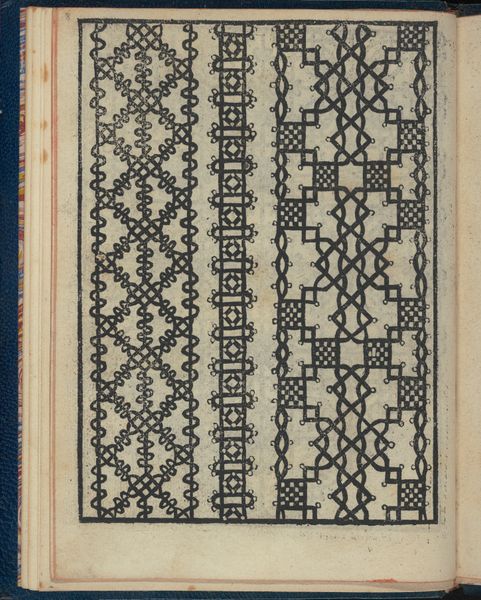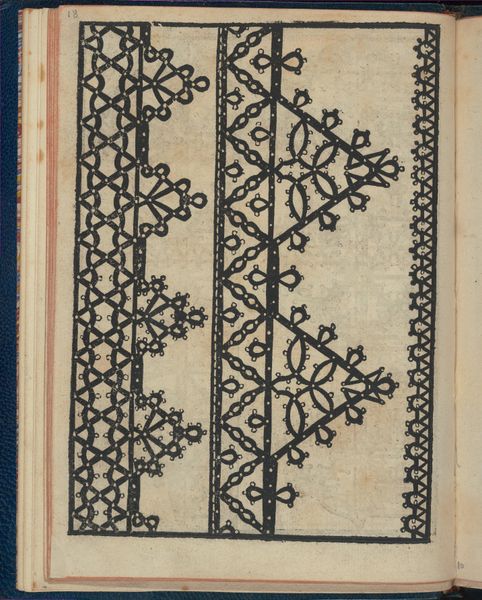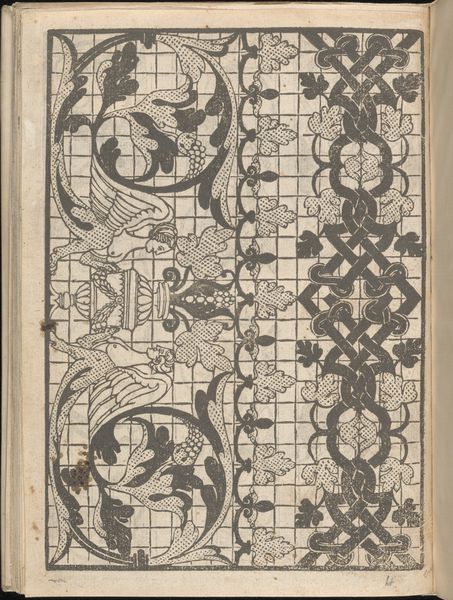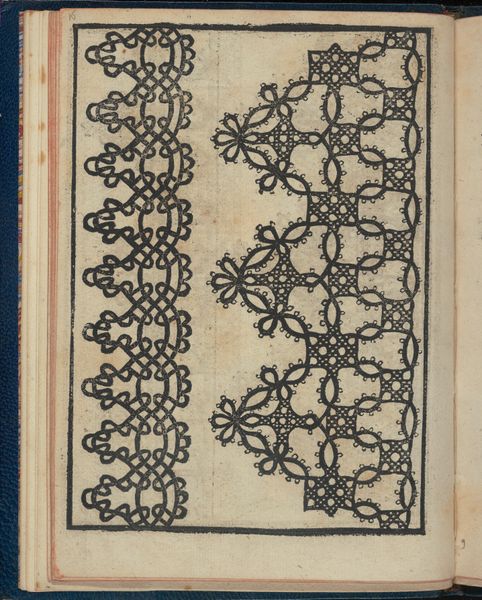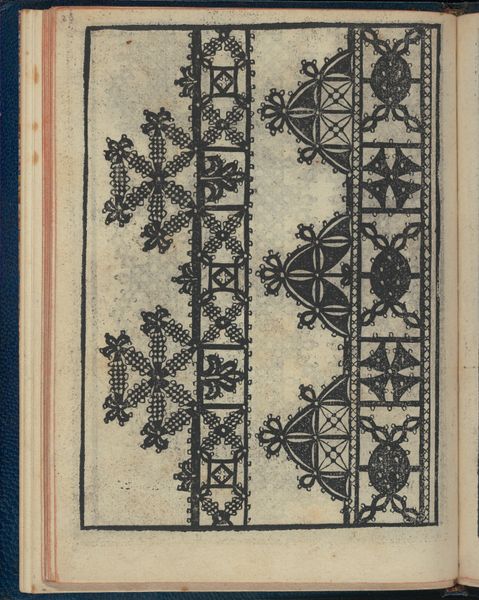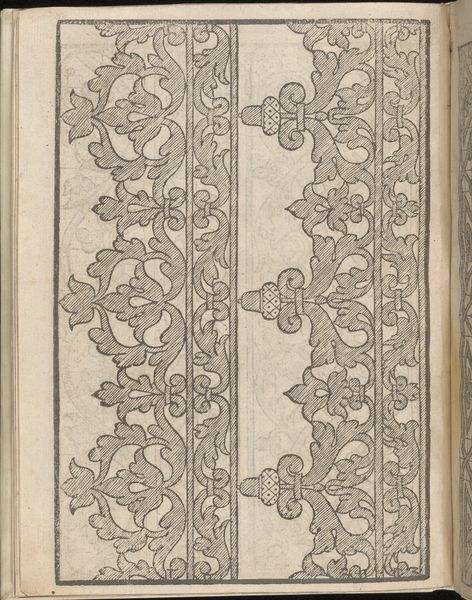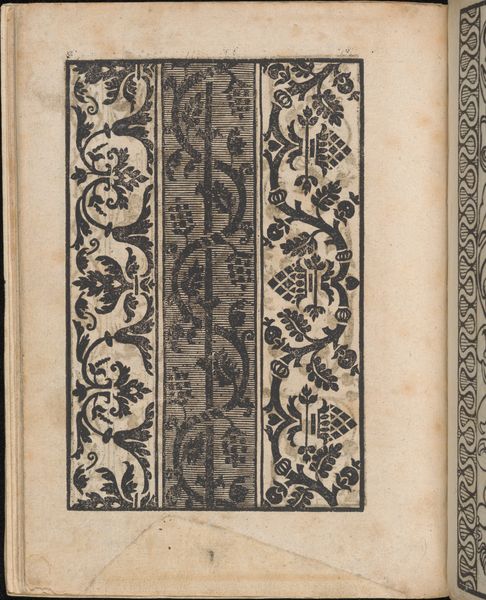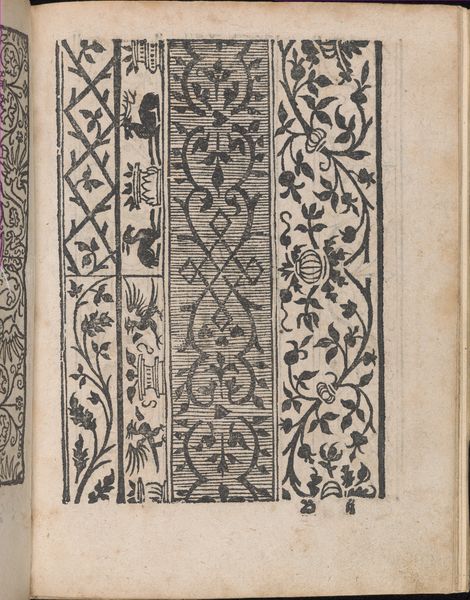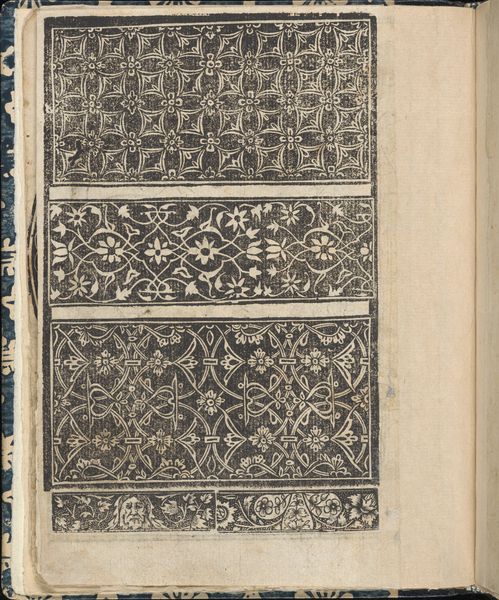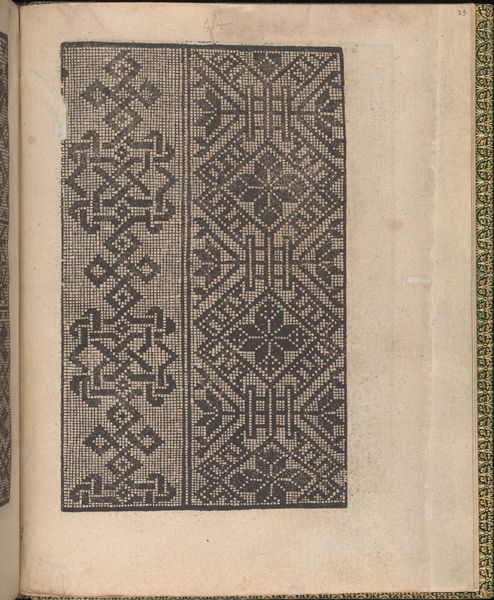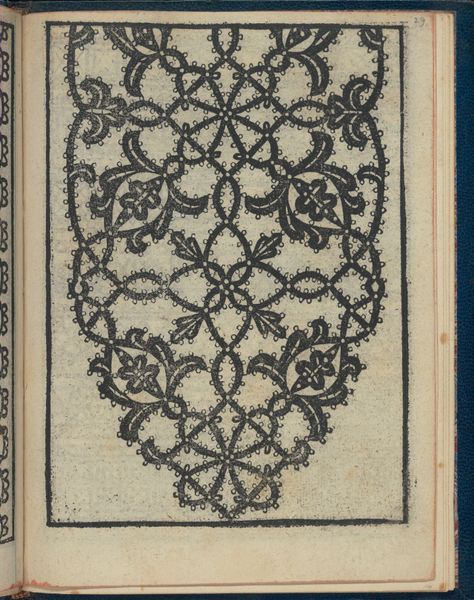
Le Pompe: Opera Nova, page 10 (verso) 1557
0:00
0:00
drawing, graphic-art, print, paper
#
drawing
#
graphic-art
#
medieval
# print
#
paper
#
geometric
#
line
#
decorative-art
Dimensions: Overall: 8 1/16 x 5 7/8 in. (20.5 x 15 cm)
Copyright: Public Domain
Curator: Here we have a page from Giovanni Battista and Marchio Sessa’s "Le Pompe: Opera Nova," dating back to 1557. It's a striking example of 16th-century Italian design, a print on paper showcasing intricate patterns intended for lacemaking. Editor: Immediately, I’m struck by its formality, almost a severe elegance. The stark contrast of black ink on the page creates this very structured and somewhat rigid feel. Curator: These designs weren’t just decorative. The geometric and floral motifs had very specific symbolic resonances for the time, communicating status, prosperity, and refined taste. They echo a kind of collective memory, tying back to older medieval visual traditions. Editor: Absolutely. And we can't ignore the economic context. Lace production in the 16th century was huge. These pattern books democratized design. Think of the power dynamic — a book allowing wider access to fashionable patterns trickling from elite consumption to a rising middle class. Curator: Indeed, patterns carried messages. The repetition of floral and geometric figures are often interpreted as expressions of harmony and the divine order. There's something quite psychologically soothing about them. Editor: Yet, there's tension in that harmony. Considering contemporary gender roles, one wonders about the lives of women engaged in lacemaking—was it empowering, a form of artistic expression and financial independence, or yet another form of constrained labor? Curator: Both, most likely. It's important to remember that creativity often flourishes under constraint. And regardless, these symbolic forms have persisted and evolved, reappearing in all sorts of later decorative work. Editor: Thinking about these patterns being reproduced by artisans across different socioeconomic statuses truly brings out that complexity for me. Curator: For me, it underscores that symbolic forms are both stable and mutable. Their echoes stretch into the present. Editor: I find myself thinking about craft, labor, and the democratization of design. It reveals the complicated history of aesthetics trickling across class lines.
Comments
No comments
Be the first to comment and join the conversation on the ultimate creative platform.
